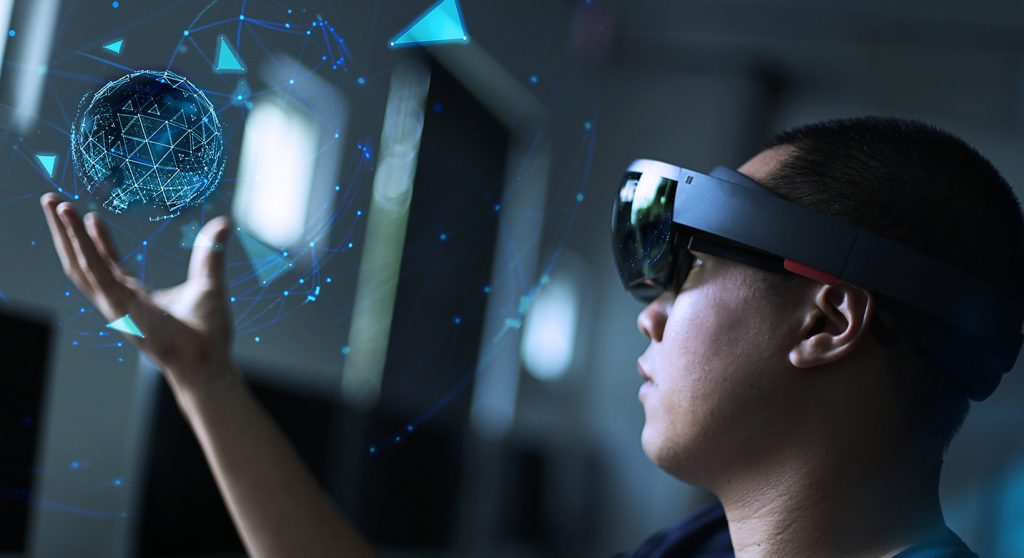AR and VR: In the realm of technological advancements, few innovations have captured the imagination as powerfully as Augmented Reality (AR) and Virtual Reality (VR). These immersive technologies are reshaping the way we perceive and interact with the digital world, opening up a realm of possibilities across various industries. In this blog, we will delve into the fascinating world of Augmented Reality and Virtual Reality, exploring their applications, benefits, and the future they hold
- Understanding Augmented Reality (AR):
Augmented Reality (AR) enhances our real-world environment by overlaying computer-generated information, such as visuals, sounds, or haptic feedback. This technology can be experienced through mobile devices, smart glasses, or headsets. From gaming and entertainment to retail and healthcare, AR is transforming industries with its interactive and informative experiences. - Unlocking Virtual Reality (VR):
Virtual Reality (VR) immerses users in a completely simulated environment, shutting out the physical world. By wearing VR headsets or using specialized equipment, individuals can engage in realistic and interactive experiences. VR has gained significant traction in gaming, training simulations, architecture, and even therapeutic applications. - Applications Across Industries:
a) Gaming and Entertainment: These technologies have revolutionized gaming, offering players unparalleled immersive experiences. They transport users into virtual worlds, allowing them to interact with objects and characters in a realistic manner. Additionally, AR enhances live events and sports broadcasts by providing real-time information and interactive elements.
Also read: You Need to Know About 5G Technology and Networks
b) Education and Training: These technologies are reshaping the way we learn and train. They enable students to explore historical sites, dissect virtual organisms, or conduct physics experiments. In professional settings, VR simulations help train employees in high-risk environments, such as aviation or medical procedures.
c) Architecture and Design: Architects and designers can now visualize and present their creations using AR and VR. These technologies allow clients to experience virtual walkthroughs of buildings before they are constructed. This streamlines the design process and enhances collaboration.
d) Healthcare and Medicine: AR and VR play a crucial role in healthcare, offering innovative solutions for diagnostics, surgery, rehabilitation, and mental health treatments. Surgeons can use AR to overlay real-time data during procedures, while VR helps patients cope with pain, anxiety, and phobias through immersive therapy.
- Advantages and Limitations:
a) Advantages: These technologies enhance engagement, improve learning outcomes, and provide realistic training experiences. They have the potential to reduce costs, enhance productivity, and open new revenue streams for businesses. Moreover, Augmented Reality and Virtual Reality can foster empathy and bridge distances, connecting people in meaningful ways.
b) Limitations and Challenges: While AR and VR have immense potential, there are challenges to overcome. High costs of hardware and development, technical limitations, and the need for user-friendly interfaces are areas that require further advancements. Additionally, concerns around privacy, data security, and potential health risks need careful consideration.
- The Future :
The future of AR and VR appears promising. As technology continues to advance, we can expect improved hardware, enhanced graphics, and more seamless integration with our daily lives. The combination of AR and VR with other emerging technologies like 5G, AI, and IoT will unlock new frontiers in areas such as remote collaboration, telemedicine, and smart cities.
Conclusion:
Augmented Reality (AR) and Virtual Reality (VR) are revolutionizing industries and shaping the way we experience the world. From immersive gaming and transformative education to practical applications in architecture, healthcare, and beyond, AR and VR are transforming our reality. While there are challenges to overcome, the potential benefits and the continuous evolution of technology make AR and VR an exciting frontier

